Immerse yourself in Barcelona's vibrant flavors and uncover hidden culinary gems with our expert insider guides. Plan an unforgettable trip today!
Read more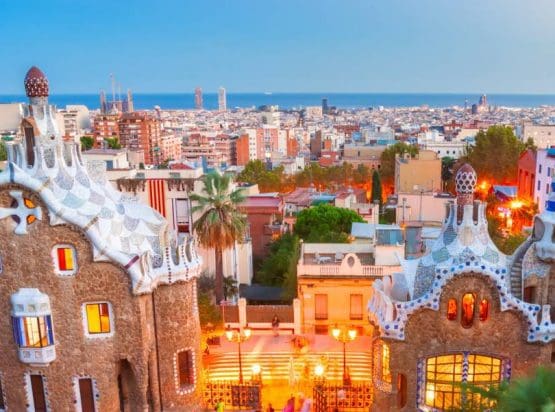
EXPLORE ALL OUR CATALUNYA WINE REGIONS GUIDE
Last updated: October 22, 2024
The ancient – and beguiling – city of Tarragona is full of surprises. Indeed, this fine old Roman museum was once the capital of Catalunya; that privilege has been transferred to the metropolis known as Barcelona, situated to the north. Yet Tarragona remains an essential cog in the regional economy, and the surrounding landscape is covered in wealth-creating vines. It is one of Catalunya’s oldest DOs (appellations), and the vast majority of wines, until recently, were late-harvest dessert styles. But, since these have fallen out of fashion, winegrowers are now producing exceptional dry whites, reds, and some refreshing bubbly. Unfortunately, only a relatively small volume of Tarragona (still) wine is sent abroad—all the more reason to visit Catalunya and enjoy these delicious wines at the source.
Discover more about Spanish Wine
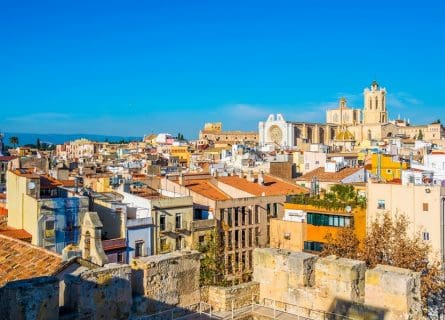
Modern Tarragona, industrious and proud, is one of eastern Spain’s most important port cities. Yet it also preserves many remnants of its Roman past; the Romans first occupied Tarragona and the environs in the 3rd century BC. Naming the city Tarraco, the Latin conquerors chose it as their base for subjugating the Iberian Peninsula, which began after Scipio defeated the Carthaginians during the Punic Wars. Today, the city is full of Roman treasures: the avenue de Rambla Nova offers spectacular views of the ancient Anfiteatro Roman (Roman amphitheater), which is amazingly intact. In addition, the well-preserved Aqueducte de les Ferreres lies just outside the city. This speaks to Tarragona’s importance within the Roman Western Empire; Emperor Augustus made Tarragona the capital of his new Tarraconensis province – stretching from Catalunya to Almeria – in 27 BC.
However, after Rome’s power evaporated in AD 476, Tarragona declined. Several Germanic tribes, including the Visigoths, Vandals, and Seubi, fought over the spoils of the decaying Western empire in the so-called Dark Ages. Even the relative stability of Visigothic rule in the 7th century proved to be an ephemeral blip in the years of chaos – internecine conflicts among the Visigoths gave their rivals, the Moors, an unmissable opportunity in 711. That year, the forces of Tariq invaded Gibraltar and soon moved into central Spain; Tarragona was abandoned when the Arab and Berber mercenaries arrived in AD 714. Meanwhile, large swathes of vineyards were grubbed up during this period, as the Moors were avid tee-teetotalers.
However, viticulture returned in the Middle Ages after Tarragona was reborn as the seat of a Christian archbishopric in the 11th century. Yet the Christian reconquest of Catalunya began very early in the 800s – Barcelona was recaptured less than a hundred years after the Moors set foot on Spanish soil. By the 1100s, Tarragona’s monasteries and churches produced substantial volumes of sweet wines enjoyed across northern Europe. Indeed, Tarragonan altar wine is still exported worldwide and used for religious ceremonies.
In the 15th century, Tarragona was absorbed into a centralized Spanish state, ruled with an iron fist by the Catholic monarchs Fernando and Isabel. After they retook the last Muslim stronghold of Granada in 1492, a new age dawned for Spain and its citizens; vast quantities of gold and silver flowed across the Atlantic to Spain, taken from the country’s new dominions in Central and South America. But little of this wealth was used to improve the nation’s ailing infrastructure: Carlos I and his son Felipe II spent much gold on wars with the Low Countries and France. By the late 1600s, Spain had lost much of its influence in Europe, and the reigning house of Habsburg entered an irreversible decline.
Resilience and Recognition
The 19th and 20th centuries were no less turbulent: Spain lost its remaining colonies in the Philippines and South America, while the ill-fated First Republic quickly consumed four presidents. Nevertheless, the restored monarch, Alfonso XIII, was forced to abdicate when a second Republic was declared in 1931. Sixteen years later, Tarragona was awarded DO status during the reign of the dictator Francisco Franco – Catalan creativity was otherwise stifled in the mid-1900s as Franco embraced absolute rule from Madrid.
However, Catalunya’s wine industry has gone from strength to strength following the restoration of democracy in the 1970s. Today, it remains an export powerhouse, led by Cava and the prestigious reds of Priorat. But Tarragona has an equally vital role in the Spanish market and further afield.
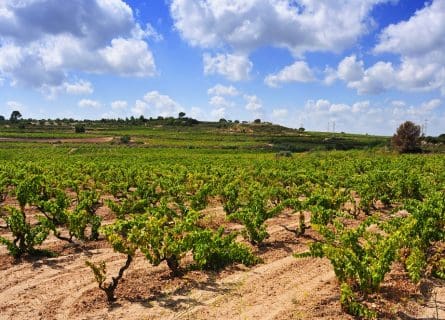
Once famous for its intense sweet wines, the picturesque vineyards of Tarragona are far more likely to produce dry styles of all three colors in 2023. The DO borders Penedes to the east and Montsant to the west; Montsant was part of the Tarragona appellation before 2001. However, the authorities decided to create a separate geographical designation for the wines of northwestern Tarragona due to their superior quality. As a result, a small area inland falls under the DO boundaries, although most of Tarragona’s vines are planted along the Mediterranean coastline.
Ideal Conditions for Vine Growth
The scenery is stunning: vines carpet a gently undulating landscape bordered by the Serra de Montalt mountain range to the north and east. Bathed in Mediterranean sunlight, Tarragona’s sea-facing vineyards benefit from very warm summers and mild winters; calcareous soils offer an advantageous mix of good drainage and water retention during the growing season. Many of the DO’s finest red wines are made here, including some very potent blends of Grenache and Tempranillo. Relatively low altitudes (200 meters above sea level) and omnipresent sunshine are ideal for late-ripening varieties like Grenache.
Yet conditions in the interior can be markedly different. Here, vineyards encircle the Ebro River in northwestern Tarragona – the Serra de Montalt is a barrier to the Mediterranean’s moderating influences (and humidity). As a result, diurnal temperature variation is far more pronounced here, particularly as vineyard elevation climbs to over 450 meters. The terroir is very heterogeneous: limestone, granite, and alluvial soils can all be found. Generally, the further inland you are, the more rock fragments cover the topsoil.
Visitors to Tarragona (an essential day trip from Barcelona) can expect a glorious diversity of wine styles, including exceptional fizz, sun-kissed rosé, and magnificent Cabernet Sauvignon reds. Historically, many growers sold grapes – and must – to Cava wineries in Sant Sadurni d’Anoia, working on a contract basis for a reasonably low price per kilo. However, a greater volume of still and sparkling wine is now made on-site, buoyed by tourist demand in Barcelona and along the coast.
Many leading white and red brands offer ripe fruit and invigorating freshness at a reasonable price. But, ambition is not curtailed in Tarragona: top labels equal Catalunya’s best and must give rivals food for thought. Thus far, the greatest successes have been the dry whites and excellent Grenache blends; Tarragona is no longer a minor part of Catalunya’s viticultural map.
Innovative Approaches
With this confidence comes new exploration of terroirs and subzones – new varieties and winemaking techniques. Skin-contact whites are becoming trendy among the younger firmament, although too much maceration can trade essential freshness for burdensome phenolics. But Xarel-lo, once ignored by still wine producers, is now ready to be recognized as Catalunya’s greatest white grape: complex, perfumed, and age-worthy. It thrives on the granite soils of the DO, as does Cabernet Sauvignon and Grenache. Meanwhile, Chardonnay requires calcareous terroir to reveal its Burgundian charm and rich structure, helped along by a well-judged dollop of new oak. Welcome to one of the most self-sufficient vineyards in Spain.
There’s a certain air of confidence about Tarragona’s modern wine industry. Domestic sales continue to rise, and producers are expanding their horizons and improving their wines – both in the vineyard and the cellar. At the turn of the century, the overriding emphasis was placed firmly on upgrading equipment and hiring consultants; today, you’re more likely to hear tales of organic conversion and the trials and tribulations of biodynamics. Expansion into new subzones continues apace, with new wine styles capturing the attention of buyers and sommeliers.
Indeed, the Xarel-lo and Grenache are excellent, but there is so much more: Macabeo and Chardonnay do very well here. There is bright Sauvignon Blanc, delicious Moscatel, fine Tempranillo, and all sorts of weird and wonderful blends.
Should Catalunya keep Tarragona’s brilliant wines to itself? Absolutely not – sustainable growth requires a good export presence in a fiercely competitive world. Thankfully, that message is starting to hit home as producers look beyond their borders and seek buyers abroad. The response, thus far, has been very positive.
Chardonnay is a green-skinned grape varietal native to the Burgundy wine region in France and one of the most popular varieties worldwide.
Find out moreThe Moscatel grape, renowned for its aromatic allure and luscious sweetness, also plays a significant role in the world of Sherry. This versatile grape variety contributes to the creation of exceptional Sherries, adding depth, complexity, and a touch of honeyed richness to these fortified wines.
Discover Viura: Rioja's Prominent White Grape & Catalonia's Macabeo. Explore its versatility in exquisite wines. A must-read for wine enthusiasts.
Find out moreUnveil the allure of Parellada grape: a Spanish gem crafting elegant sparkling & white wines. Explore its unique qualities & flavor profile.
Find out moreThe sauvignon blanc grape varietal, originally from the Bordeaux region of France, is now one of the world's most loved white varieties.
Find out moreUnveiling Xarel-lo: A Key Grape in Catalonia's Cava Sparkling Wine. Discover the Intriguing Role of Xarel-lo in Spain's Sparkling Delight.
Find out moreDiscover the irresistible allure of Cabernet Sauvignon—a worldwide favorite with robust, dark-bodied flavor. Unleash your wine journey today!
Find out moreCarignan is a red grape variety that grows mostly in Southern France, and is often used as a blending grape
Find out moreGarnacha: Spain's Red Gem. Akin to Pinot Noir, it bridges terroir and winemaking, crafting captivating expressions.
Find out moreMerlot is the most cultivated grape in Bordeaux and closely related to Cabernet Franc
Find out moreSumoll Blanco is a rare white-wine variety found in Catalonia, Spain. Once commonly planted, it has been replaced by more commercially viable options, despite its quality, which is characterized by good acidity, minerality, and flavors like lemon and pineapple. Permitted in the Tarragona and Penedès DOs, it is used in both oaked and unoaked styles.
Discover Tempranillo: Spain's iconic red grape. From Ribera del Duero to Toro, it yields concentrated wines. Explore its synonyms and unleash its prowess.
Find out moreCatalan cuisine owes much to the Moors’ (relatively) brief tenure: citrus, rice, olives, saffron, and almonds were imported into Catalunya in the 8th century. These wonderful ingredients are used to spectacular effect in Tarragona; local chefs flex their creative muscles with impeccably fresh seafood and game of the interior. Many of the city’s leading fish restaurants are found in the Serrallo – Tarragona’s fishing port. The atmosphere is electric: dozens of bars and restaurants sell the day’s catch to eager visitors and locals. Turn up early for the best tables with port-side views.
A Guide to Catalan Gastronomy: Read more

Immerse yourself in Barcelona's vibrant flavors and uncover hidden culinary gems with our expert insider guides. Plan an unforgettable trip today!
Read more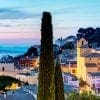
Immerse yourself in Begur's vibrant flavors and uncover hidden culinary gems with our expert insider guides. Plan an unforgettable trip today!
Read more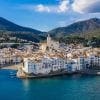
Immerse yourself in Cadaquès's vibrant flavors and uncover hidden culinary gems with our expert insider guides. Plan an unforgettable trip today!
Read more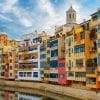
Immerse yourself in Girona's vibrant flavors and uncover hidden culinary gems with our expert insider guides. Plan an unforgettable trip today!
Read more
Immerse yourself in Sitges's vibrant flavors and uncover hidden culinary gems with our expert insider guides. Plan an unforgettable trip today!
Read moreIf you would like us to customize an exclusive luxury tour, contact us and let us know your travel plans. We offer luxury food and wine tours for private groups of a mininium two guests. In addition, all of our private, chauffeured tours are available year-round upon request.

